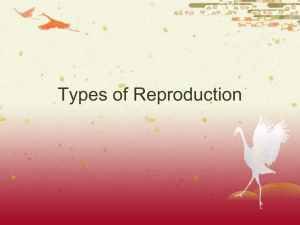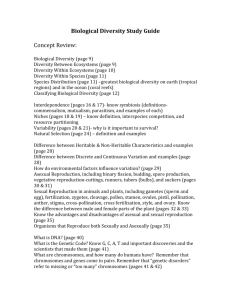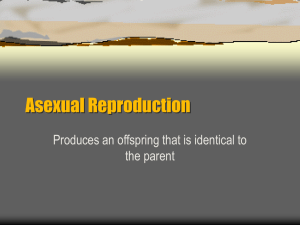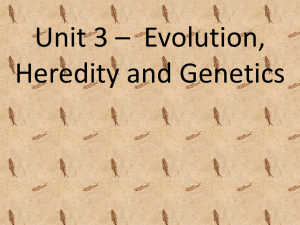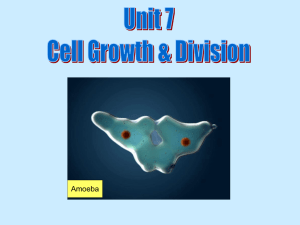Reproduction Notes
advertisement
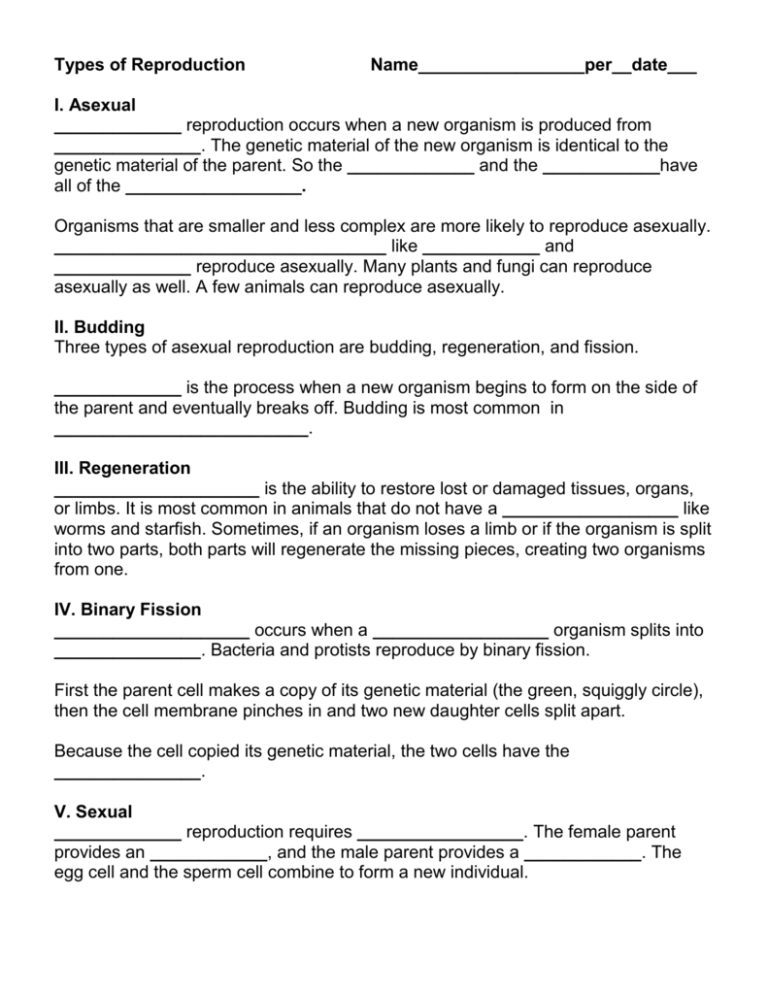
Types of Reproduction Name_________________per__date___ I. Asexual _____________ reproduction occurs when a new organism is produced from _______________. The genetic material of the new organism is identical to the genetic material of the parent. So the _____________ and the ____________have all of the __________________. Organisms that are smaller and less complex are more likely to reproduce asexually. __________________________________ like ____________ and ______________ reproduce asexually. Many plants and fungi can reproduce asexually as well. A few animals can reproduce asexually. II. Budding Three types of asexual reproduction are budding, regeneration, and fission. _____________ is the process when a new organism begins to form on the side of the parent and eventually breaks off. Budding is most common in __________________________. III. Regeneration _____________________ is the ability to restore lost or damaged tissues, organs, or limbs. It is most common in animals that do not have a __________________ like worms and starfish. Sometimes, if an organism loses a limb or if the organism is split into two parts, both parts will regenerate the missing pieces, creating two organisms from one. IV. Binary Fission ____________________ occurs when a __________________ organism splits into _______________. Bacteria and protists reproduce by binary fission. First the parent cell makes a copy of its genetic material (the green, squiggly circle), then the cell membrane pinches in and two new daughter cells split apart. Because the cell copied its genetic material, the two cells have the _______________. V. Sexual _____________ reproduction requires _________________. The female parent provides an ____________, and the male parent provides a ____________. The egg cell and the sperm cell combine to form a new individual. The egg cell has genetic material from the female parent and the sperm cell has genetic material from the male parent. Therefore, the offspring will have genetic material from both parents. This is called ____________________________. Sexual reproduction allows new individuals to have genetic variation because they get a _________________________ from ______________________. VI. Pollination ________________ is a form of ________________reproduction. Pollination occurs in _______________. Pollen is taken from the male parts of one plant and delivered to the female parts of another plant, usually by an insect. The pollen then travels inside the flower and fertilizes an egg. The egg will grow into a seed which can become a new plant. Pollination also allows for genetic variation because the traits from ______________ are mixed. VII. Sexual vs. Asexual Sexual Reproduction Asexual Reproduction Number of Parents 2 parents 1 parent Genetic Variation _______ of genetic variation (a ______ of traits from _____ parents) _____ genetic variation (the _______ traits from only ___ parent)
